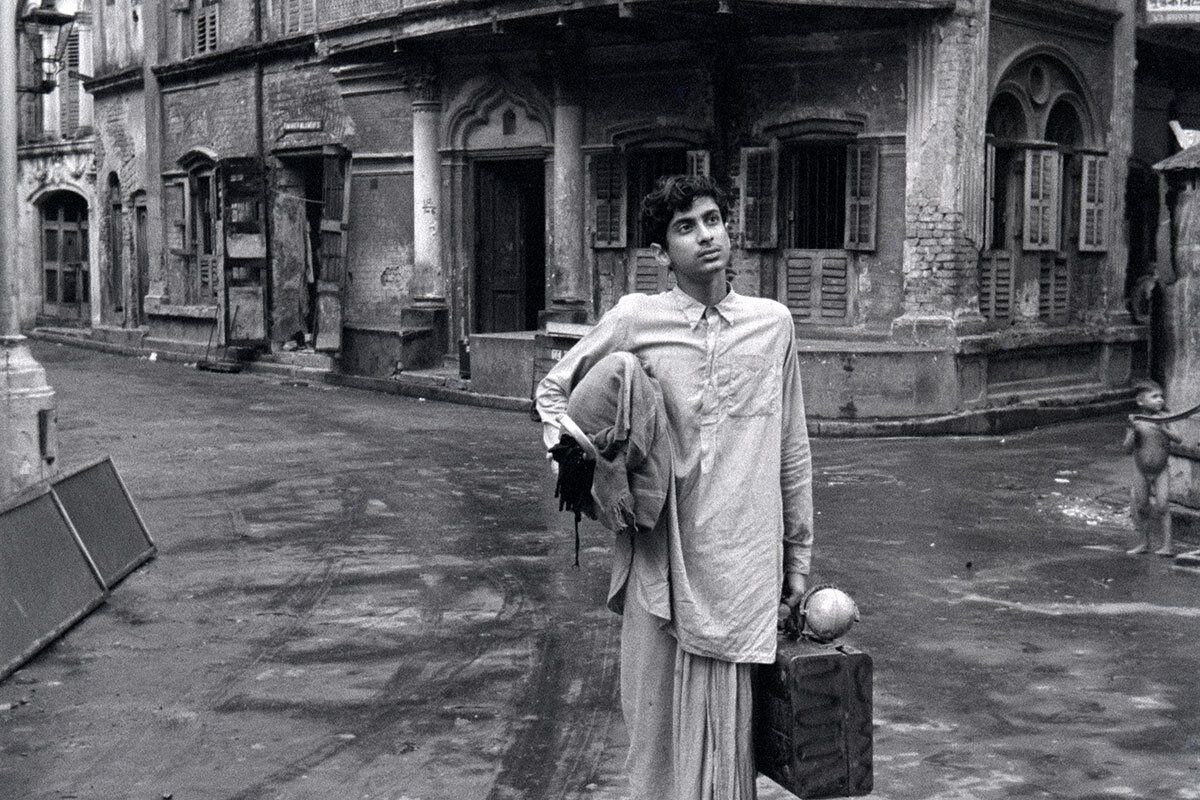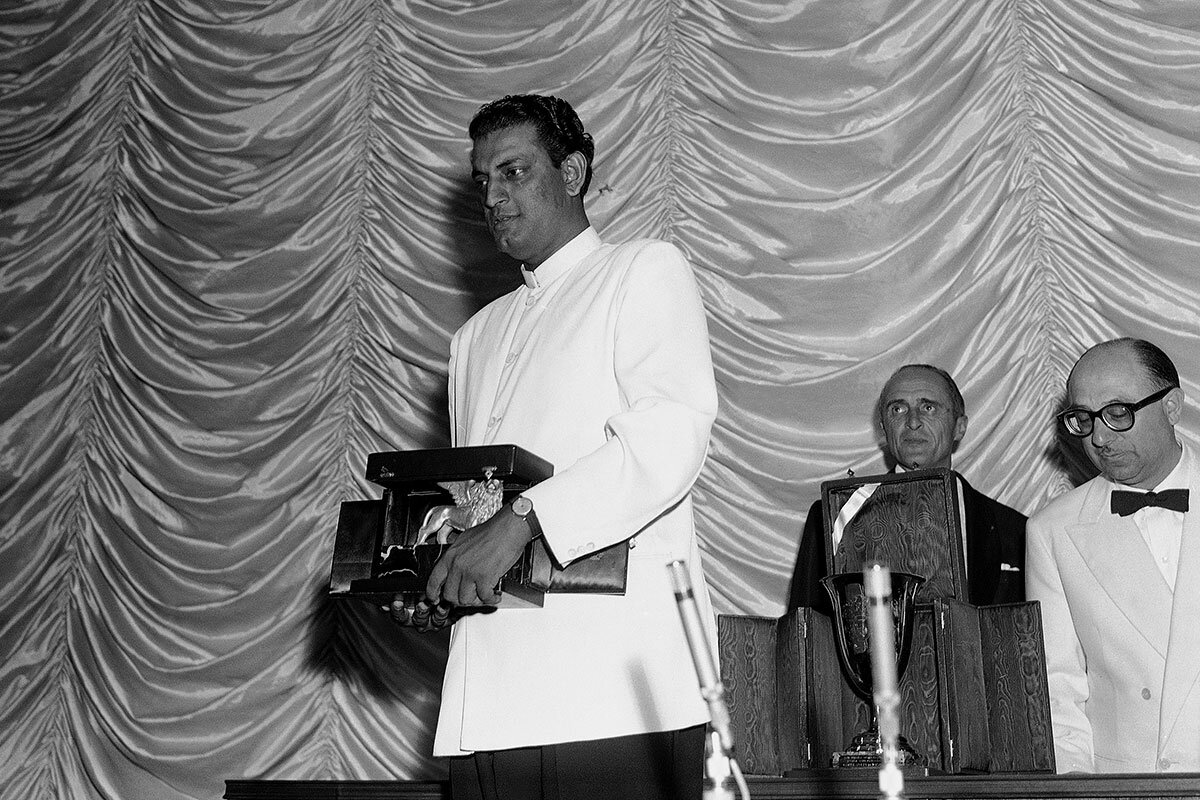Home theater: See the world through the eyes of director Satyajit Ray
Loading...
Of the films of the great Indian director Satyajit Ray, the Japanese master Akira Kurosawa once said that not having seen them ŌĆ£is like never having seen the sun or the moon.ŌĆØ I completely agree. For me, Ray is perhaps the finest of all film artists. The humanism of his vision, and the lyricism he brings to it, is overwhelming. No other director has so consistently expressed what it means to be alive. No other filmmaker, male or female, has explored with such profound grace and understanding the inner lives of women.
I had the honor in the fall of 2008 to be invited to Kolkata, India, to lecture to local students and film societies about his work. As a white Westerner, I was wary of coming across like some sort of postcolonial know-it-all. I neednŌĆÖt have worried. Our shared love for Ray dissolved any barriers. I was accompanied by a member of the Academy of Motion Picture Arts and Sciences who was instrumental in the ongoing restoration of RayŌĆÖs films, many of which were in a state of disrepair. (Ray was awarded an honorary Oscar in 1992, shortly before his death.)
EditorŌĆÖs note: As a public service,┬Āall our coronavirus coverage┬Āis free. No paywall.
Why We Wrote This
When looking for films to transport you during lockdown, start with those by Indian auteur Satyajit Ray. ŌĆ£No other director has so consistently expressed what it means to be alive,ŌĆØ says film critic Peter Rainer. ŌĆ£No other filmmaker, male or female, has explored with such profound grace and understanding the inner lives of women.ŌĆØ
The trip was one of the most enthralling and mysterious experiences in my career. Ray lived and worked in Kolkata, formerly known as Calcutta, where he was revered. Inhabiting his world, however partially, connected me to his way of seeing. I saw in the faces of the people ŌĆō the abjectly poor, the well-to-do, the merchants, the office workers ŌĆō the imprint of his artistry. Whenever I look at a movie by Ray now, I am transported back to that time.
RayŌĆÖs movies would be supremely transporting even if one had never set foot inside India. His films may have ethnographic value but thatŌĆÖs not remotely what makes them so great. They are great because they reveal us to ourselves. They are great because they express with full transcendence the sacredness of our humanity.┬Ā
Trying to whittle down the directorŌĆÖs oeuvre to a couple of movies is like picking out a couple of plays by Shakespeare. IŌĆÖve seen most of RayŌĆÖs 29 feature films, and IŌĆÖm not being sentimental or starry-eyed when I say that he has the highest batting average of any major film director. The vast majority of his output is extraordinary but I will highlight here his most famous contribution, The Apu Trilogy. I consider it the finest linked series of films ever made. (Ravi Shankar composed the beautiful music.) They stand on their own but for maximum effect must be seen in order.
Never having directed a movie before, Ray began his career in 1955 with ŌĆ£Pather Panchali (Song of the Little Road)ŌĆØ (unrated), derived from a classic novel about rural Bengali life and its impoverishments. The focus is on little Apu and his family, and it conveys like no other movie the sense of liberation one gets from breaking free, however momentarily, from the restraints of such a world. A sequence where Apu and his older sister Durga┬Ārace across the fields to glimpse a distant train ŌĆō a symbol of a faraway realm ŌĆō takes you to the limits of feeling.
Ray originally had no intention of extending ApuŌĆÖs story, but in 1956 he released ŌĆ£Aparajito (The Unvanquished)ŌĆØ (unrated), the second installment. In this narrative, Apu first moves to Benares with his parents and then, when tragedy hits, moves to the countryside and then to Calcutta, where he has won an academic scholarship. The heady world of the city turns him away from his roots. His mother pines for him. We last see her, ailing, hoping for his return, as she steps outside her home into a swarm of fireflies lighting up the night.
The third film, ŌĆ£Apur Sansar (The World of Apu)ŌĆØ (unrated; 1959) brings us the adult Apu, played by┬ĀSoumitra Chatterjee, and his newfound bride Aparna, played by Sharmila Tagore, as they discover who they are and what they mean to each other. ItŌĆÖs the most delicate and intuitive portrait of a marriage IŌĆÖve ever seen. The two first-time actors went on to star, often together, in some of RayŌĆÖs best movies.┬Ā
At the risk of being listy, I canŌĆÖt help but end by citing a few other Ray masterpieces for your delectation: ŌĆ£Devi (The Goddess)ŌĆØ (1960),┬Ā ŌĆ£Teen Kanya (Two Daughters)ŌĆØ (1961), ŌĆ£Ghare-Baire (The Home and the World)ŌĆØ (1984), ŌĆ£Aranyer Din Ratri (Days and Nights in the Forest)ŌĆØ (1970), ŌĆ£Mahanagar (The Big City)ŌĆØ (1963), and ŌĆ£Charulata (The Lonely Wife)ŌĆØ (1964).┬ĀAs Kurosawa said, they are the sun and the moon.┬Ā┬Ā
The films┬Āin The Apu Trilogy, which all include English subtitles, are available to rent on AmazonŌĆÖs Prime Video, YouTube, Google Play, and iTunes.┬Ā





